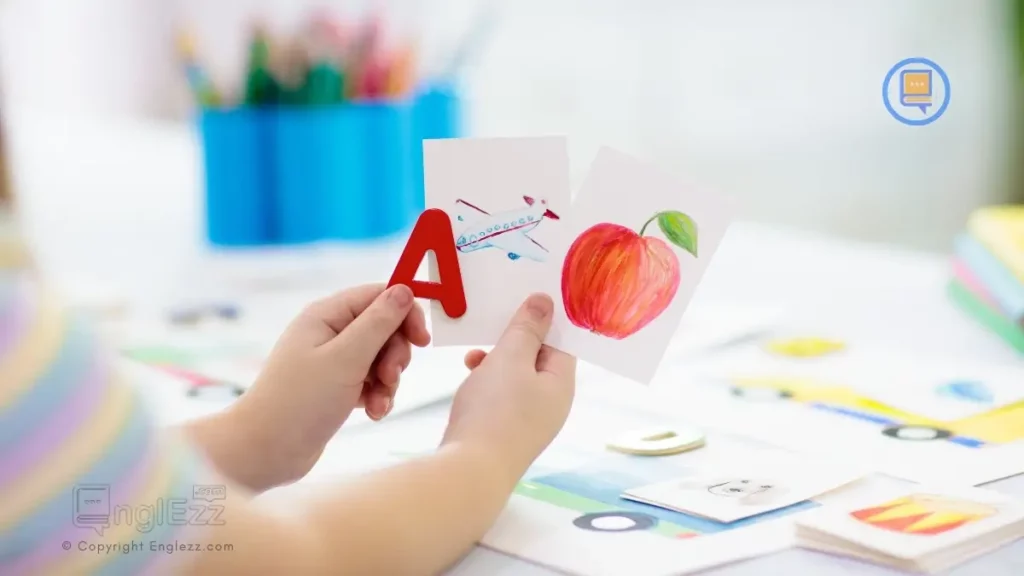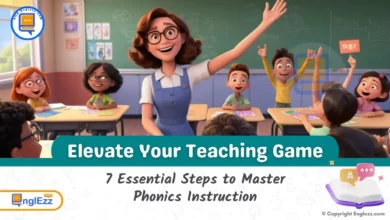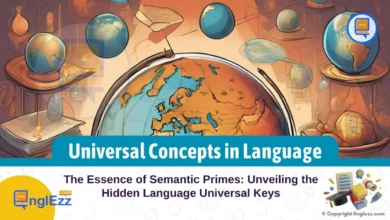Embark on a transformative journey where pedagogy meets play, redefining how English Language Teaching (ELT) assessments can ignite a fervor for learning. The concept of gamifying assessments in ELT unveils an innovative approach that transcends traditional evaluation methods. Imagine classrooms buzzing with excitement as students eagerly dive into game-based formative evaluations, unlocking a realm of engagement and motivation previously untapped.
Table of Contents
- How Gamifying Assessments Fuels ELT Success
- Understanding Gamification in Education
- Game Elements for Formative Assessment
- Benefits of Gamified Assessments in ELT
- Implementing Gamified Assessments Successfully
- Overcoming Challenges in Gamifying Assessments
- Impact on Student Engagement and Learning Outcomes
- Future Trends in Gamifying Assessment Education
- Empowering Educators Through Gamification
- FAQs:
- Q: How can I start implementing gamified assessments in my ELT classroom?
- Q: What if some students are resistant to gamified assessments?
- Q: Are there specific technological requirements for incorporating gamification into ELT?
- Q: How do I ensure that gamified assessments align with curriculum standards?
- Q: What long-term effects can I expect from implementing gamified assessments in my ELT classroom?
How Gamifying Assessments Fuels ELT Success
By infusing game elements into assessments, educators harness the power of gamification to create immersive learning experiences that captivate and empower ELT students. Picture a scenario where language mastery intertwines seamlessly with gameplay, paving the way for dynamic interactions, instant feedback loops, and avenues for personalized growth.

Through this strategic fusion of education and entertainment lies the key to not just measuring academic performance but fostering a deep-seated passion for language acquisition—a synergy that propels ELT success to new heights.
Understanding Gamification in Education
Gamification in education involves incorporating elements like game design, mechanics, and dynamics into non-game contexts to enhance the learning experience. By leveraging intrinsic motivators such as competition, achievement, and rewards, educators can create engaging environments that drive student participation and performance. In English Language Teaching (ELT), gamification transforms traditional assessments into interactive experiences that captivate learners. For example, language teachers can implement a points system where students earn points for completing tasks or participating actively in class discussions. This encourages healthy competition and motivates students to excel in their language skills.
One key aspect of gamification is its ability to boost student motivation and engagement in the learning process. When educational content is presented in a playful and challenging manner, students are more likely to be invested in their own progress. In ELT classrooms, gamified assessments not only make learning fun but also empower students to take ownership of their language development journey. For instance, using leaderboards to track students’ performance can inspire healthy rivalries among learners while fostering a sense of accomplishment when reaching new milestones.
Successful gamification strategies in ELT classrooms often involve the integration of badges or virtual rewards to acknowledge students’ achievements. By visually representing progress through digital badges or certificates, educators can create a sense of accomplishment that drives continued effort and engagement. These tangible rewards serve as powerful incentives for students to actively participate in language activities and strive for excellence. Moreover, the element of storytelling within gamified assessments adds depth and context to learning materials, making language acquisition more memorable and meaningful for students on their linguistic quests.
In summary, understanding gamification principles empowers educators to revolutionize traditional assessment practices by infusing excitement and interactivity into the learning process. When applied effectively in ELT settings, gamification not only enhances student motivation but also cultivates a dynamic classroom environment where learners are eager participants in their language acquisition journey. Embracing innovative approaches like gamified assessments opens doors for creative teaching methods that inspire a love for learning and foster continuous growth among ELT students.
Game Elements for Formative Assessment
In the realm of English Language Teaching (ELT), incorporating game elements like leaderboards, points systems, badges, and rewards into formative assessments can revolutionize the learning experience for students. Imagine a leaderboard showcasing the top performers in a language proficiency quiz, igniting friendly competition while motivating learners to strive for excellence. By introducing such game elements, educators infuse a sense of excitement and engagement into traditional assessment methods. These tools not only incentivize students to actively participate but also cultivate a dynamic and interactive environment where learning becomes a journey filled with challenges and achievements.
By integrating badges and rewards into ELT assessments, teachers create tangible incentives that recognize students’ progress and accomplishments. For instance, earning a badge for mastering complex grammar rules can serve as a source of pride and motivation for English language learners. Moreover, point systems can gamify language tasks by quantifying achievements and progression levels, providing students with clear indicators of their advancement in language skills. Through these creative implementations of game elements, educators can tailor assessments to cater to diverse learner preferences within the ELT classroom.
Customization is key when incorporating game elements into assessments in ELT contexts. Teachers have the flexibility to adapt these elements to align with specific curriculum objectives and student needs effectively. For example, designing a reward system based on individual learning goals allows each student to experience personalized feedback tailored to their unique strengths and areas for improvement. By offering this level of customization, educators empower learners to take ownership of their language development while fostering a supportive and engaging educational atmosphere where every achievement is celebrated.
Benefits of Gamified Assessments in ELT
Gamified assessments offer a plethora of advantages in English Language Teaching (ELT) by transforming traditional evaluation methods into engaging and interactive experiences for students. One key benefit lies in the promotion of active participation among learners. By incorporating game elements such as quizzes, challenges, or interactive tasks, educators can create a dynamic classroom environment that encourages students to actively engage with the learning material. This heightened level of involvement not only makes the learning process more enjoyable but also enhances overall retention and understanding of the content.
Moreover, gamification fosters collaboration among students as they work together towards common goals or compete in friendly challenges. Collaborative activities within gamified assessments not only strengthen interpersonal skills but also create a sense of community within the classroom, enhancing peer-to-peer learning opportunities. The spirit of teamwork instilled through these assessment practices extends beyond academic achievements and cultivates important social skills essential for students’ personal growth.

In addition to promoting active participation and collaboration, gamified assessments fuel intrinsic motivation among ELT students. The element of challenge and achievement present in gamification inspires learners to push themselves further, setting personal goals and striving to surpass their own expectations.
This internal drive to excel not only leads to improved learning outcomes but also instills a sense of accomplishment and self-confidence in students as they conquer various challenges presented through gamified assessments. Furthermore, immediate feedback mechanisms inherent in gamification allow students to receive instant evaluation on their progress, providing them with valuable insights for improvement and stimulating reflective thinking on their language learning journey.
Implementing Gamified Assessments Successfully
When it comes to implementing gamified assessments in English Language Teaching (ELT) effectively, educators can benefit from following practical tips and guidelines that enhance student engagement and learning outcomes. Firstly, it is crucial for educators to align these gamified assessments with the specific learning objectives and curriculum standards of their ELT classrooms. By ensuring that the game elements incorporated serve educational goals, teachers can create a cohesive learning experience that blends assessment with active participation.
When gamifying assessments in ELT, consider incorporating narrative elements to create a cohesive and immersive experience for students. For example, design assessment tasks where learners progress through challenges or levels that tie into a compelling storyline. By weaving engaging narratives into your assessments, you can increase student motivation and foster a deeper connection with the learning content. Think of language learning quests where students “unlock” new vocabulary or grammatical structures as they advance in the game.
One way to implement gamified assessments successfully is by showcasing real-life examples of how other ELT teachers have effectively integrated game-based formative evaluation into their teaching practice. For instance, sharing stories of educators who have used leaderboards or badges to incentivize English language learners to actively participate in classroom activities can inspire fellow teachers to explore similar strategies. Real-world success stories provide concrete evidence of the benefits of gamification in ELT and help educators visualize how they can adapt these methods to fit their own teaching styles and students’ needs.
Furthermore, offering step-by-step guidelines on how to introduce gamified assessments can be invaluable for educators looking to embark on this innovative pedagogical journey. These guidelines may include starting with simple game elements like points systems before gradually incorporating more complex features such as rewards or leveling up mechanisms. By breaking down the implementation process into manageable steps, educators can navigate the transition to gamified assessments with confidence and clarity, fostering a supportive environment where students thrive through interactive and engaging learning experiences.
Overcoming Challenges in Gamifying Assessments
Implementing gamified assessments in ELT contexts can be met with several challenges that educators may encounter along the way. One common obstacle is student resistance to new teaching methods or technologies. Some students might be hesitant to engage with gamified assessments if they are accustomed to more traditional evaluation approaches. To address this challenge, educators can involve students in the design process of the gamified assessments, allowing them to provide input and feel a sense of ownership over the learning experience. By incorporating elements that align with student interests and preferences, teachers can increase student buy-in and participation.
Technical difficulties represent another significant challenge when integrating gamification into assessments. Educators may face hurdles related to technology compatibility, accessibility issues, or limitations in using gaming platforms within their educational settings. To overcome these technical obstacles, teachers can start by conducting thorough testing of the gamified assessment tools beforehand and providing students with clear instructions on how to navigate the systems. Additionally, offering alternative offline options or utilizing simpler digital tools can help mitigate technical challenges while still achieving the desired engagement outcomes.
Continuous evaluation and adaptation are crucial for the sustainable integration of gamification practices in ELT classrooms. As educational landscapes evolve, it’s essential for educators to regularly assess the effectiveness of their gamified assessments and make adjustments based on feedback and observations. This process involves staying attuned to student responses, analyzing data on engagement levels and learning outcomes, and being willing to refine or modify game elements as needed for ongoing improvement. By embracing a growth mindset and remaining flexible in their approach to gamification, teachers can ensure that their efforts lead to long-term success in engaging ELT students through game-based formative evaluation.
Impact on Student Engagement and Learning Outcomes
Gamified assessments have demonstrated a profound impact on student engagement and subsequent learning outcomes in English Language Teaching (ELT) contexts. By infusing elements of gameplay into assessments, educators can effectively elevate student participation and motivation. Research findings consistently show a strong correlation between heightened engagement levels cultivated through gamified assessments and improved academic performance among ELT students. When learners are immersed in a gamified environment that stimulates their competitive spirit or desire to achieve specific goals, they are more inclined to actively participate in the language learning process.

Furthermore, studies highlight how gamification plays a pivotal role in enhancing language acquisition and proficiency development. By integrating game-based formative evaluation techniques into ELT practices, educators can create dynamic learning experiences that resonate with students on both cognitive and emotional levels. These interactive approaches not only make language learning more enjoyable but also accelerate students’ progress in acquiring linguistic skills. Gamification fosters an environment where learners feel encouraged to engage with the material consistently, leading to substantial improvements in their overall language proficiency over time.
In addition to immediate academic benefits, the long-term effects of using game-based formative evaluation strategies extend to shaping students’ attitudes towards learning English. Through the positive reinforcement provided by gamified assessments, students develop a sense of achievement and empowerment as they navigate challenges within a playful yet structured framework.
This shift in mindset towards viewing language learning as an exciting journey rather than a tedious task can significantly boost students’ confidence and willingness to explore new linguistic territories. As students experience success and growth within a gamified ELT environment, they are more likely to maintain a proactive approach towards mastering English skills while enjoying the process along the way.
Future Trends in Gamifying Assessment Education
As technology continues to shape the landscape of education, gamification in ELT is poised to undergo exciting advancements that will transform assessment practices and instructional design. One emerging trend is the integration of virtual reality (VR) and augmented reality (AR) into gamified assessments. Imagine English Language Teaching students immersing themselves in virtual language environments where they can apply their skills in real-life scenarios, gaining contextualized learning experiences while receiving instant feedback within a game-based framework. VR/AR technologies not only enhance student engagement but also offer a new dimension of interactive assessment tools for educators.
Introduce friendly competition among students by implementing leaderboards or point systems that track individual or group progress. Encourage collaboration and teamwork by awarding points not just for correct answers but also for helping peers improve their language skills. Consider organizing classroom competitions where students work together to achieve common goals, such as mastering specific language skills within a set timeframe. This approach not only adds an element of excitement but also cultivates a supportive learning community within your ELT classroom.
Another trend on the horizon is the utilization of artificial intelligence (AI) in gamified assessments. AI-powered systems can analyze student performance data, adapt challenges based on individual learning needs, and generate personalized feedback tailored to each learner’s progress. By harnessing AI algorithms, ELT teachers can create dynamic assessment systems that continuously evolve with students’ proficiency levels, providing a more personalized and effective learning journey through gamification.
Furthermore, gamification experts predict the rise of cross-platform integration, where ELT assessments seamlessly transition between different devices and platforms. This synchronization allows students to engage with gamified assessments on their laptops during class time, continue on their smartphones during breaks, and even collaborate with peers on tablets after school hours. The flexibility offered by cross-platform integration not only supports continuous learning but also promotes collaborative problem-solving and peer interaction within a digital gaming environment.
Educators are encouraged to stay abreast of these future trends and embrace innovative methodologies to propel their teaching practices forward. By exploring these cutting-edge developments in gamifying education for ELT practitioners, teachers can unlock new potentials for engaging students, maximizing learning outcomes, and creating stimulating assessment experiences that inspire a love for language acquisition through playful yet purposeful interactions in the classroom. Embracing these advancements ensures that educators remain at the forefront of educational excellence through adaptable pedagogical strategies that blend traditional teaching approaches with modern technological innovations for enhanced student success.
Empowering Educators Through Gamification
In conclusion, gamifying assessments in English Language Teaching (ELT) presents a powerful tool for educators to enhance student engagement, motivation, and learning outcomes. By integrating game elements into formative evaluation practices, teachers can create dynamic and interactive assessment environments that foster active participation and collaboration among students. The gamification of assessments not only provides immediate feedback but also encourages intrinsic motivation and self-reflection, essential components of the language acquisition process.
Tailor feedback and rewards based on individual student needs and learning styles to enhance the effectiveness of gamified assessments. Provide immediate feedback on each task to guide students in understanding their strengths and areas for improvement. Offer diverse types of rewards, like virtual badges, certificates, or special privileges in class, to acknowledge student achievements and encourage continuous progress. By customizing feedback mechanisms and incentives, you can motivate ELT students to actively engage with the assessment process while fostering a sense of accomplishment in their language learning journey.
Empowering educators through gamification involves equipping them with the knowledge and skills to implement game-based formative evaluation effectively in ELT classrooms. By aligning gamified assessments with learning objectives and curriculum standards, teachers can tailor their approaches to suit the diverse needs of their students. Real-life examples of successful implementation by ELT teachers serve as inspiration for integrating gamification seamlessly into teaching practices. Moreover, overcoming challenges such as student resistance or technical difficulties requires a flexible and adaptive mindset, emphasizing continuous evaluation and refinement.
As educators immerse themselves in the world of gamification, they not only enrich their teaching strategies but also impact student engagement and academic performance significantly. Research findings highlighting the positive influence of gamified assessments on language acquisition and proficiency development underscore the importance of incorporating such innovative methodologies into educational practices.
Looking toward future trends in gamifying education for ELT practitioners opens up exciting possibilities for further revolutionizing assessment practices and instructional design, encouraging educators to stay informed about advancements in the field to continuously enhance their teaching approaches with gamification.
FAQs:
Q: How can I start implementing gamified assessments in my ELT classroom?
A: Begin by identifying your learning objectives and selecting suitable game elements to align with them. Introduce one game element at a time to gradually integrate gamification into your assessments.
Q: What if some students are resistant to gamified assessments?
A: Encourage open communication with students to understand their concerns and highlight the benefits of gamified assessments such as immediate feedback and increased engagement.
Q: Are there specific technological requirements for incorporating gamification into ELT?
A: While technology can enhance the gaming experience, many game elements can be implemented using low-tech solutions like leaderboards on whiteboards or point systems with physical tokens.
Q: How do I ensure that gamified assessments align with curriculum standards?
A: Map out your curriculum objectives first, then select game elements that reinforce these goals. Ensure that assessment tasks linked to these elements assess targeted language skills.
Q: What long-term effects can I expect from implementing gamified assessments in my ELT classroom?
A: Over time, you may observe increased student engagement, higher motivation levels, improved academic performance, enhanced language proficiency development, and most importantly – a transformed attitude towards learning English through interactive and meaningful experiences.









🌟 Discover how gamifying assessments can revolutionize English Language Teaching (ELT) success at EnglEzz 🚀💡 Follow for more educational insights! and elevate student engagement!
.
https://www.englezz.com/how-gamifying-assessments-fuels-elt-success
.
#EnglishLanguageTeaching #gamification #studentengagement #ELTsuccess #innovativeeducation #formativeassessment #teachingstrategies #gamifiedlearning